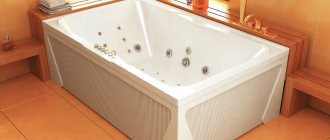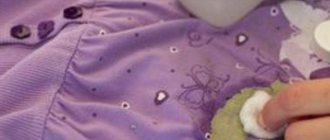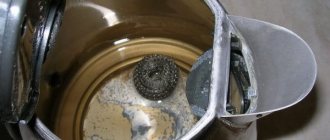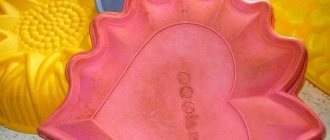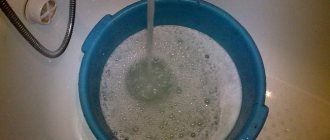Properties of silicone-based compounds
The beneficial properties of sealant have long been noted by builders and home craftsmen. This material does not deform at high and low temperatures. It does not melt at temperatures up to +200 degrees, which means it is perfect for the bathroom, kitchen or sauna. The silicone composition can withstand frost down to -50, does not crack or crumble.
A high quality sealant can greatly facilitate repairs.
An important property of a silicone-based product is the presence of fungicides. This is an analogue of an antiseptic that prevents the proliferation of germs and pathogens. This means that no fungus or mold is dangerous if the seams are treated with high-quality silicone sealant. If this is important to you, when choosing a product, pay attention to whether it contains antifungal components.
It is simply impossible to imagine any finishing or construction work without silicone sealant.
The polyurethane composition fills any seams and cracks, dents and scratches. It can be stripped and sanded flush to the surface without anyone noticing the difference. This is the ideal tool for eliminating most external defects. After drying, the sealant remains elastic and resilient and does not crumble under pressure or pressure.
Silicone sealant joints are very durable.
Silicone-based compounds adhere to any base, from wood to metal. The product does not drip if applied to vertical walls or surfaces located at an angle. A large number of advantages make it indispensable for any repair.
How to remove silicone and acrylic sealant
The most reliable way to remove silicone and acrylic sealant from various planes is to combine mechanical and chemical methods.
From the bath
To remove the old seam between the wall and the bathroom, you need to prepare a sharp knife, salt, a washcloth, and a solvent.
Use a knife to cut a seam in the middle. This will make the process much easier and faster. By hooking it from below, the entire tape is removed. The remaining traces are washed with salt and a sponge, then wiped with a rag soaked in solvent.
If the marks are fresh, then vinegar will help wash off the silicone sealant. Once the stain has hardened, apply vinegar overnight.
When using an acrylic surface, care should be taken as it is more susceptible to mechanical damage. For cleaning, a wooden or plastic scraper is used and the products are applied for no more than 15 minutes.
How to dissolve silicone sealant
During renovation or finishing work, it sometimes happens that the surrounding environment becomes dirty. Traces of hardened silicone can be found on tiles, on the kitchen table and even on the skin. Unfortunately, hardened acrylic sealant, for example, cannot be cleaned off without leaving a trace by mechanical action or by scraping it off the surface with a knife. This will leave both stains and scratches. How to remove sealant?
After completing the repair, excess silicone must be carefully removed.
Silicone-based products can be dissolved using formulations containing alcohol or acids. When cleaning, be sure to follow the following precautions:
- Ventilate the room regularly to avoid inhaling vinegar or alcohol fumes;
- use personal protective equipment, a respirator and gloves;
- do not try to remove the sealant immediately, wait until it softens and turns into jelly;
- If the sealant falls during application and does not have time to harden, do not pick it up with bare hands; use a knife or construction tool to pry it up.
To choose what to dissolve silicone sealant with, you need to take into account the component composition of the material.
To remove frozen sealant, you will have to resort to special solvents.
Silicone removal process
Almost all solvents are similar in the process of interaction with the sealant. Since the composition has an aggressive effect on the surface and humans, they take care of their safety. Provide good ventilation, wear gloves and a respirator. Before use, try the effect on a sample. When the check is completed, proceed to the following steps:
- The selected product is applied to the contaminated surface. The manufacturer indicates the application method on the solvent. To do this, use a washcloth or apply the product to the stain.
- The instructions indicate the time of exposure to the solvent, it is maintained. It varies from 1 to 24 hours depending on the degree of drying.
- The contamination turns into a gel-like state, after which it is removed. Most often, a dry cloth is used for this. But there are exceptions to the rules. Using “Silikill”, dissolved dirt is removed with a damp, soapy cloth.
The solvent acts faster if the dissolution procedure is performed in a dry room. Remove the remaining aggressive composition with a damp sponge. This procedure is mandatory, otherwise solvent residues will continue to corrode the coating or get on the skin. After cleaning, the work area is ventilated.
Before looking for a means to dissolve silicone sealant, ask yourself the question of feasibility. There is no point in removing frozen sealant on a plasterboard sheet, since this will soften the material itself that is being puttied. If the drop is large, then it is cut off at the root and then hidden under a layer of plaster.
Types of solvents
Sometimes silicone substance that is not completely dry can be removed with a regular all-purpose cleaner. If a lot of time has passed since the drop hit and the household product did not work, it’s time to use specialized solvents. They are the ones who know how to remove silicone.
Silicone can be removed from any surface.
Before you begin cleaning, pay attention to the surface material where the stain may have dried. If you use a solvent that is too aggressive, it, together with silicone, can damage the top decorative part of the furniture or remove paint from the metal.
The sealant must be applied carefully.
Therefore, compare what, where and for how long you will apply so as not to worsen the situation. You should remember about safety precautions and the flammability of any type of solvent.
How to deal with dried silicone at home
This problem often has to be solved at home. You have to get rid of frozen silicone by any means. To solve this problem, it is best to use special organic solvents. They need to be applied to the frozen silicone sealant, wait a few minutes, and then remove the softened mass with any sharp object.
As mentioned above, a special remover and chemicals, which are divided into several groups, according to the area of application, perfectly combat frozen silicone.
However, you must always remember that any remover contains acid, which can spoil the object being cleaned. For example, you cannot clean leather objects, such as a chair, with this remover. In addition, the remover can ruin the acrylic bathtub.
Folk remedies solvents
It happens that you don’t have a professional cleaner at hand, and a drop of sealant falls into a visible place. You can try to remove the stain using traditional recipes.
Silicone can be removed with tools.
You need to be extremely careful, do not touch the sealant with your hands, and carefully remove any remaining silicone with a knife or spatula.
- Gasoline solvent “White spirit” perfectly softens the texture of the silicone product. This cleaner does not act immediately, but has a prolonged effect. After about half an hour or an hour, you can try to remove with a suitable tool the excess sealant that has already begun to dissolve.
- You can try to remove traces of sealant using installation cleaner. The product does not always work, but a thin layer of silicone softens it well. All you have to do is remove the soft, sticky layer using available means.
- Household solvent helps remove traces of sealant. Silicone layers need to be wetted many times because the cleaner dries quickly. Repeat the procedure until the leak becomes pliable enough to be removed. Some craftsmen manage to literally dissolve the sealant in the product and completely remove the unnecessary layer.
- Almost every home has acetone. It does not eliminate old traces of silicone composition, but it copes well with fresh drops of it. Sometimes this is quite enough to restore order and eliminate an annoying nuisance. Acetone can replace remover for decorative nail polish.
- Sometimes regular homemade table vinegar or ammonia helps soften the texture of the sealant. Apply a little of this homemade solvent to a cotton swab and apply it to the area you want to clean for half an hour. Then carefully clean off the silicone stain using a fine abrasive, such as a sponge or sandpaper.
- Gasoline or kerosene will also come to the aid of an experienced craftsman. Moisten the silicone stain with this solvent and wait until it softens completely.
- Sometimes you can get rid of a fresh, not yet hardened silicone drop using an ordinary plastic bag. Apply the cellophane to the stain, wait for it to catch, and sharply tear it away from the surface to be cleaned. The silicone component will remain stuck to the bag, and all you have to do is clean up the remaining mark.
- A soap solution helps to dilute and wash silicone from surfaces. Use hot water, which will further soften the stain.
Material Removal Methods
Removing or updating the sealant is necessary when the material is aging, damaged by fungus, mold, contamination of the non-working surface, or improper application.
Chemical
The use of special chemical compounds is considered a non-hazardous way to remove sealants. This silicone sealant remover will allow you to thoroughly remove residues without mechanical damage to the surfaces and hands.
The following products will help you wash silicone sealant: Soudal remover, Titeseal cleaner, Tytan, others. The usual solvent white spirit or gasoline can also help.
When applying chemicals, it must be taken into account that the layer must be at least twice as thick as the sealant layer. It will take from 1 hour to 8 hours to soften the mass. The period depends on the thickness of the initial layer. To speed up the process, the top part of the layer must be removed mechanically.
To remove fresh traces of acrylic or silicone, soak a rag in vinegar, gasoline or thinner and wipe off the stain.
Mechanical
To remove silicone and acrylic sealant, you need to evaluate the coating on which it was applied. This is done in order to select a tool for safe removal of the layer.
If a layer of acrylic or silicone material has independently separated from most of the plane, then only light prying with a flat object and removal is required.
The mechanical method involves removal with hard objects: kitchen or stationery knife, screwdriver, scissors, blade, plastic pointed objects.
This method is suitable for cleaning hard surfaces (bathroom, tiles, glass, etc.).
Step by step execution:
- Using a sharp object, cut off the bulk of the product, as close to the base as possible. The blade should run along the cleaning plane.
- Minor remnants of the acrylic or silicone layer are removed with a brush.
- Next, apply a cleaning powder (soda, salt, etc.), using the hard side of a kitchen sponge, and wipe the surface.
Powder cleaners require moistening before use.
Specialized solvents
When folk remedies don’t work, specialized solvents come to the rescue. Their action is based on the destruction of polymer compounds of silicone composition. Using a professional cleaner, you can remove stains of any age and at any stage of hardening. This product turns the sealant into a jelly-like mass without damaging the surface on which it is frozen.
There are many special products that will remove silicone.
- Penta-840 silicone remover literally destroys polymer compounds at the molecular level. The remarkable thing about this product is that softened silicone can be removed with a napkin rather than with a knife blade. Does not leave marks on the surface, but requires preliminary testing on a small area. The “Penta-840” wipe is quite aggressive, so how the solvent behaves in your case needs to be checked experimentally.
- The universal liquid for preparing and cleaning surfaces Dowsil OS-2 is actively used not only in everyday life, but also for treating aerospace and medical equipment. The product is known for its respect for the environment, the absence of components harmful to the ozone layer and the ability to remove silicone base from any surface at different stages of hardening. Dowsil OS-2 removes both new and old sealant stains with equal success.
- The Mellerud brand is presented in a wide range for consumers. Therefore, it is necessary to carefully read the names, composition and purposes of the products on the labels. The work of the product for removing the silicone layer is based on strong acids. Therefore, the cleaner is recommended for wooden, glass and ceramic surfaces. Experienced craftsmen recommend cutting off the top layer of hardened sealant before applying the cleaner for quick and maximum effect.
- Car enthusiasts love to use Body ANTISIL 770 liquid cleaner. The active formula works on organic components. Therefore, the remover is indispensable for chrome, aluminum and other delicate, easily deformed surfaces. Automotive cleaner helps remove sealant from car parts.
Useful tips
Solvents soften the sealant, but do not remove it completely.
More often, builders remove small silicone drops using white spirit. But: if the sealant is applied to a painted surface, it is removed along with the paint.
Repairers call Penta-840 a silicone remover. This is the best option. The advantage is the choice of produced variations that are used for specific surfaces.
Under the influence of low temperatures Penta-840 does not lose its characteristics. In the case of complete polymerization of silicone, the product will destroy it, but after prolonged exposure. Therefore, it is better to use Penta-840.
Remove sealant from rubber gaskets using a solvent used by car painters, Antisil.
Solvents
Silicone-Entferner will help you clean silicone from ceramics, metal, enamel and PVC surfaces. At the same time, the surface will not lose its shine, will not fade or become matte.
Professionals often use "Silicone Remover". It is expensive, but even capricious surfaces tolerate this solvent calmly.
But it’s better to make a neat silicone seam right away. A short video will help you figure this out:
Removing sealant from different surfaces
When removing stains from products containing polymer compounds, consider the type and material of the surface being cleaned. Many removers have contraindications for use and cannot be used, for example, on wooden surfaces.
A utility knife will also help remove the sealant.
To understand how to remove excess silicone sealant, you need to start from the material of the working surface.
Plastic
Plastic has a smooth surface, devoid of pores and rough texture. This has the added benefit of stripping it of silicone compounds. Here you can carefully work with a spatula or knife, soak the stain with vinegar or alcohol, apply a cotton pad and gasoline or kerosene.
Fresh sealant can be removed quickly.
Of the professional removers, those containing hydrochloric acids have proven themselves to be effective. They do not corrode plastic and eliminate any contamination.
Vinegar and alcohol are your assistants in removing sealant.
Glass
Due to its dense structure, glass does not allow sealant to penetrate into deep layers. Such a surface cannot be scraped with a knife or other sharp objects, so as not to scratch and create cracks.
Use professional sealant removers.
Professional solvents, kerosene, acetone and other folk remedies work most effectively. After removing the sealant from the glass, wipe it dry with microfiber or a special sponge to remove streaks.
Tile
The tiles look beautiful due to the glazed decorative surface. If it gets stained with silicones, do not scratch, scrub or rub. Cleaners containing organic components are also contraindicated.
Silicone sealant is most often used in the bathroom.
A ceramic surface can become dull and lose its brightness due to an incorrectly selected wash. Carefully read the composition and instructions before use, look for recommendations for cleaning ceramic slabs.
Silicone is not difficult to remove from tiles.
Tabletop
If the sealant on a wooden countertop has not yet hardened, you can remove it with hot water and an ordinary rag. You can try to pry off the frozen drop with a plastic spatula.
Use vinegar to remove silicone from the table.
Refrain from scraping the sealant off the table with a knife or other metal object.
Human skin
If you were not wearing gloves and the silicone-polymer mixture stuck to your skin, do not forcefully remove the adhered layer. This can lead to injury to the skin and possible further infection.
Sealant can also be quickly removed from the skin.
You can remove a frozen drop with any alcohol-containing composition. Apply a cotton pad soaked in alcohol and wait until the foreign layer completely softens.
Textile
70-80% acetic acid or an alcohol-containing liquid will help remove the hardened layer from the fabric. First test the method on a small area of fabric to make sure the item will not be damaged.
How to dissolve dried sealant
An alcohol solution will help dissolve the acryplast seam. In this case, it is applied directly to the substance or the thing is soaked until the stain is completely softened.
If the silicone sealant contains acids, then a 70% mixture of acetic acid can dissolve it.
When carrying out dissolution with these means, constant ventilation is carried out indoors. When working, IZ means are used. The skin of the hands should be protected with gloves, the respiratory system with a respirator.
Dissolution is carried out by applying the material to the silicone seam. After an hour, a jelly-like mass will appear instead of a solid layer. It can be removed with a rag or washcloth.
Organosilicon masses leave fatty traces on the surface, which are washed off with dishwashing balm.
How to dilute frozen silicone
Sometimes the sealant hardens and needs to be returned to its liquid state. Craftsmen know how to dilute silicone sealant to a liquid state. Thinners come to the rescue, which need to be used in very measured doses.
Use a quality sealant for repair work.
The selected composition must be diluted carefully and in doses, observing all safety precautions. Make sure there is good ventilation in the room where you are. Some compounds can emit toxic fumes that have a detrimental effect on human health.
Only the applied liquid sealant retains its plasticity and is easy to remove.
Be sure to wear gloves and, if possible, clear safety glasses or a mask. The impact of thinning mixtures returns the sealant to its liquid state.
Adviсe
To remove silicone and acrylic, follow these tips:
- Heating. This method will quickly get rid of stains on any surface. To do this, the contaminated area is moistened with vinegar, then a paper sheet is applied, which is ironed with a hot iron.
- Freezing. To implement this method, the item is placed in the freezer, the time for complete freezing is waited, and the stain is removed with a sharp object.
- Minor stains can be wiped off with hydrogen peroxide.
- No pollution allowed. The work must be done with gloves and work clothes. Apply masking tape near the area to be treated.
We recommend watching the video instructions:
What not to do
Although the sealant is convenient, durable and easy to use, it has its contraindications and nuances:
- Pay attention to the expiration date of the product. Expired silicone takes too long to harden or does not harden at all.
- If you need to fill deep cracks, do not try to do it in one go. Work in layers, allowing long drying periods between pours. By observing this condition, you will achieve amazing results.
- There are sealants that are only suitable for interior work that is not visible to the eye. For example, to seal a bathtub from the inside. Such a product may turn yellow over time, since it does not have a decorative function.
- Use extreme caution when working on cast iron and metal surfaces. Some silicone compounds cannot be used with these materials as they will cause corrosion.
- Many people use sealant to insulate their houses, sealing cracks and irregularities. Do not use this method for new buildings; give the walls a couple of years for final shrinkage. Otherwise, the sealant will “corrode” along the walls and will not perform its functions.
- If you are looking for a sealant with fungicidal and antibacterial properties, remember that such a silicone layer must be renewed every few years. The antifungal effect disappears over time.
A spatula is a tool for removing sealant.
Many zealous owners breathed a sigh of relief with the appearance in the world of a sealant that solves many problems at once. But such a coin has two sides. Plan even minor cosmetic repairs carefully. Read the instructions carefully and follow the rules of personal safety.
Mechanical removal of acrylic sealant
If done incorrectly, such methods can damage the surface, leaving marks on it. Therefore, you need to use mechanical means with extreme caution. A razor blade is best in this case. With its help, you should carefully remove the layers of sealant one by one until the very last. Residues can be cleaned up using a plastic or wooden scraper. Next, wipe the area with a soapy cloth and clean water to remove the last traces.
If sealant gets on plastic, you must carefully rub it with plastic. After the sealant has been wiped off, the residues, as in the first case, are washed off with soapy water and rinsed with clean water.
Cleaning powder and steel wool are other options for scrubbing acrylic sealant. However, such methods are used as a last resort and should be used with even greater caution. It is much easier to damage any surface using these products than with all others.
These are mechanical means of dealing with sealant residues, but there are other ways.
